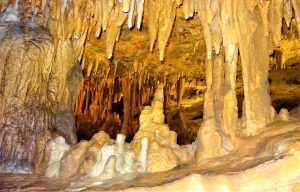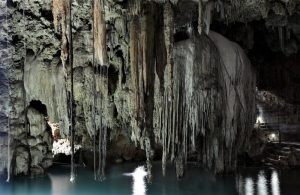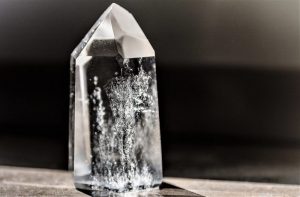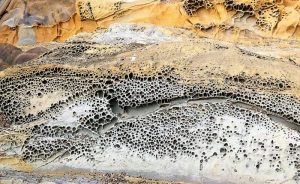Stalagmites
Stalagmites are a natural process that marvel at sight, are defined as natural phenomena that are almost impossible to overlook, however, people often confuse them with stalactites. Unlike stalactites that are born from the ceiling, stalagmites are formed from chemical processes from the floor. They are mostly found in caves with high concentrations of calcium carbonate.
What are stalagmites?
They are calcareous concretions that go through a formative process thanks to water filtrations with drop by drop drops. Due to water displacements in underground areas, it produces an effect in sedimentary rocks, where it ends up dissolving the calcium carbonate and making it filter through the lower areas of the cave. By air and gas pressurization with high carbon content, this produces a precipitate, a kind of tip that ends in fall, which goes through a solidification process in some area of the underground vaults, these are given the name of stalactites and it is below them where stalagmites are formed due to the constant dripping from the stalactites on the same point. There is the possibility that both formations come to touch each other, but for this to happen usually quite a few centuries.
Definition
A stalagmite is one of the types of speleothem, which means mineral deposit that is formed by chemical process called precipitation, part of the Greek word “stalagmos” which means “drip“, which in turn is translated into the Latin scientific term “stalagmites” which ends up being the term used today to refer to it.
It is formed in the soil of a limestone cave by cause and effect of solution decanting and calcium carbonate degradation. There are stalagmites that have come into contact with the stalactite forming a column giving them the name of pillars of calcium.
Characteristics of the stalagmites
Scientists’ study on stalagmites determined that the time of growth of these precipitations usually varies a lot, therefore, they are also interrupted due to chemical effects or natural effects such as weather changes.
Attempts were made to evaluate several cases with constant study in which it was sought to evaluate and determine the growth time of the same and came to the conclusion that for stalagmites to grow 1cm, would take 2 years approximately.
Stalactites normally have a different shape to stalagmites, these have a wider shape and have a more trimmed tip, however, their shape will always vary with respect to the rate of waterfall, evaporation, drip height and climatic effects.
How they are formed
Stalagmites and stalactites are formed by the decanting of minerals dissolved in water, through sedimentary stones. The water passing through the caverns is filtered by the water, and at the same time, it treats the karstic minerals, minerals that are soluble in water, mostly carbonates, such as calcite or sulfates, such as gypsum.
When these minerals finished being treated and dissolved, this reaches a cavity, by the process that passed through the composition of this mineral changes and this allows it to precipitate getting this way that this solidifies, achieving this way that it accumulates consecutively.
All these chemical processes are due to several factors, the two main and most important are evaporation and carbon dioxide accumulation in the caverns. Due to the high accumulations of CO2 in the cavern areas, it allows a small part of it to dissolve in the water and become part of the electrochemical process, becoming a carbonate, and competing with the others that come from the minerals. Since the solubility of CO2 in water is very low and the effects of moisture in caves, they end up slowing the formation of stalactites and stalagmites.
Where they can be found
Stalagmites and stalactites are formed mostly in the vaults or caves cavities that have high concentrations of minerals which are high in carbon, usually in the middle and lower levels of caves, stalactites are formed at the top of caves and these always grow in a descendent way, while stalagmites are formed by them. In the caves, where we see large stalagmites, is because they have lasted centuries to form 2.5cm every 4 and 5 years approximately.
They are usually formed in limestone caves, but this is not an impediment, as they can be formed in artificial caverns through natural deposits of different minerals.
Ice stalagmites
The term ice stalagmite is misapplied, as they do not go through any decanting process which is the basis for its formation. The real name that should be given to these formations is ice cone, as they pass through a different process.
The conical formations that we see during winter seasons or that are seen in ice caves, are formed by a dripping process, just like stalagmites but due to low temperatures, makes the drops reach a level of condensation and solicitation faster, the lower the temperature the faster the solidification speed.
Salt stalagmites
Salt stalagmites are the most common, as they are formed from calcium carbonate one of the main components of the salt and this also complies with the entire process of decanting and formation.
How they differ from stalactites
The most notable difference between stalagmite and stalactite is that while one is formed at the top of caves, the other is formed at ground level, however, stalagmite always needs the constant drip, since without it, it would not be possible to form.
Which are the most important stalactites in the world?
- The largest stalagmite found is in Zhijin, a Chinese In them, stalagmites of 70 meters or more are usually found.
- The second is in the cave of San Marerin-Infierno in Cuba. A size 63 stalagmite recognized by scientists.
- The third is located in Italy in the cave Ispinigoli, in Sardinia. It has a stalagmite of 50 meters. The fourth is found in Slovakia in the KrásnohorskáJaskyna In it is a 32.6 meter stalagmite.
How to cite this article?
Briceño V., Gabriela. (2019). Stalagmites. Recovered on 4 January, 2025, de Euston96: https://www.euston96.com/en/stalagmites/










